The wonderful city of Barcelona is one of my favourite places in the whole world. I may be slightly biased with having a partner from this incredible place, however, I have come to really appreciate the never-ending cultural experience that can be found here. This is a neighbourhood guide to Montjuïc, an area in Barcelona, Spain. If you want to read about other neighbourhoods in Barcelona, check out my other posts here.
The hill of Montjuïc is an iconic reference point in Barcelona. It overlooks the Barcelona harbour, southwest of the central part of the city. However, it’s not just merely a point on a map but, rather, it is the birthplace of Barcelona. It’s likely because of its strategic location that a settlement was born here. The top of the hill has been the home of several fortifications over the centuries. In the 18th century, a new fortress was built on the remains of a demolished fortress. This is the fortress that still stands on the hill today, called the Castle of Montjuïc.

 However, today’s Montjuïc has really developed as a result of two major events in the city: the 1929 International Exposition and the 1992 Summer Olympics. The former was a world fair, designed to showcase the achievements of nations globally. Each exposition also has a theme and the 1929 edition was themed, “Arts, Industry and Sport”. Similarly to modern-day whereby countries boost up their cultural offerings when they’re hosting the Olympics, the exposition allowed for the construction of several buildings and structures in Barcelona.
However, today’s Montjuïc has really developed as a result of two major events in the city: the 1929 International Exposition and the 1992 Summer Olympics. The former was a world fair, designed to showcase the achievements of nations globally. Each exposition also has a theme and the 1929 edition was themed, “Arts, Industry and Sport”. Similarly to modern-day whereby countries boost up their cultural offerings when they’re hosting the Olympics, the exposition allowed for the construction of several buildings and structures in Barcelona.
Museu Nacional d’Art de Catalunya (MNAC)
One such building is the Palau Nacional, the main site of the exposition. Since 1934, it has been home to the Museu Nacional d’Art de Catalunya (MNAC) (the “National Art Museum of Catalonia”).
 One of the most extraordinary collections in the MNAC is the Romanesque Art collection. It is an incredibly important collection because it has so many large mural paintings. Many of the works here originally adorned rural churches in the Pyrenees and other sites in Catalunya Vella (“Old Catalunya”).
One of the most extraordinary collections in the MNAC is the Romanesque Art collection. It is an incredibly important collection because it has so many large mural paintings. Many of the works here originally adorned rural churches in the Pyrenees and other sites in Catalunya Vella (“Old Catalunya”).
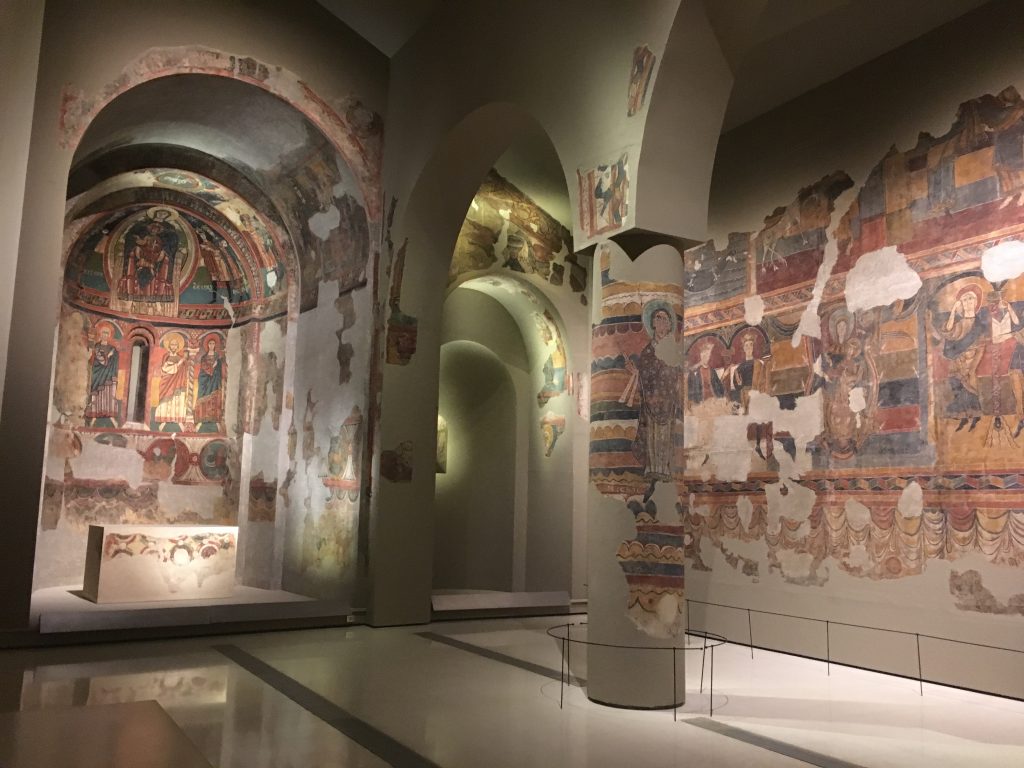 The museum is home to several other collections, like a gothic one and a modern one. There is something for everyone at the MNAC, whether you prefer renaissance/medieval art or a more modern style!
The museum is home to several other collections, like a gothic one and a modern one. There is something for everyone at the MNAC, whether you prefer renaissance/medieval art or a more modern style!
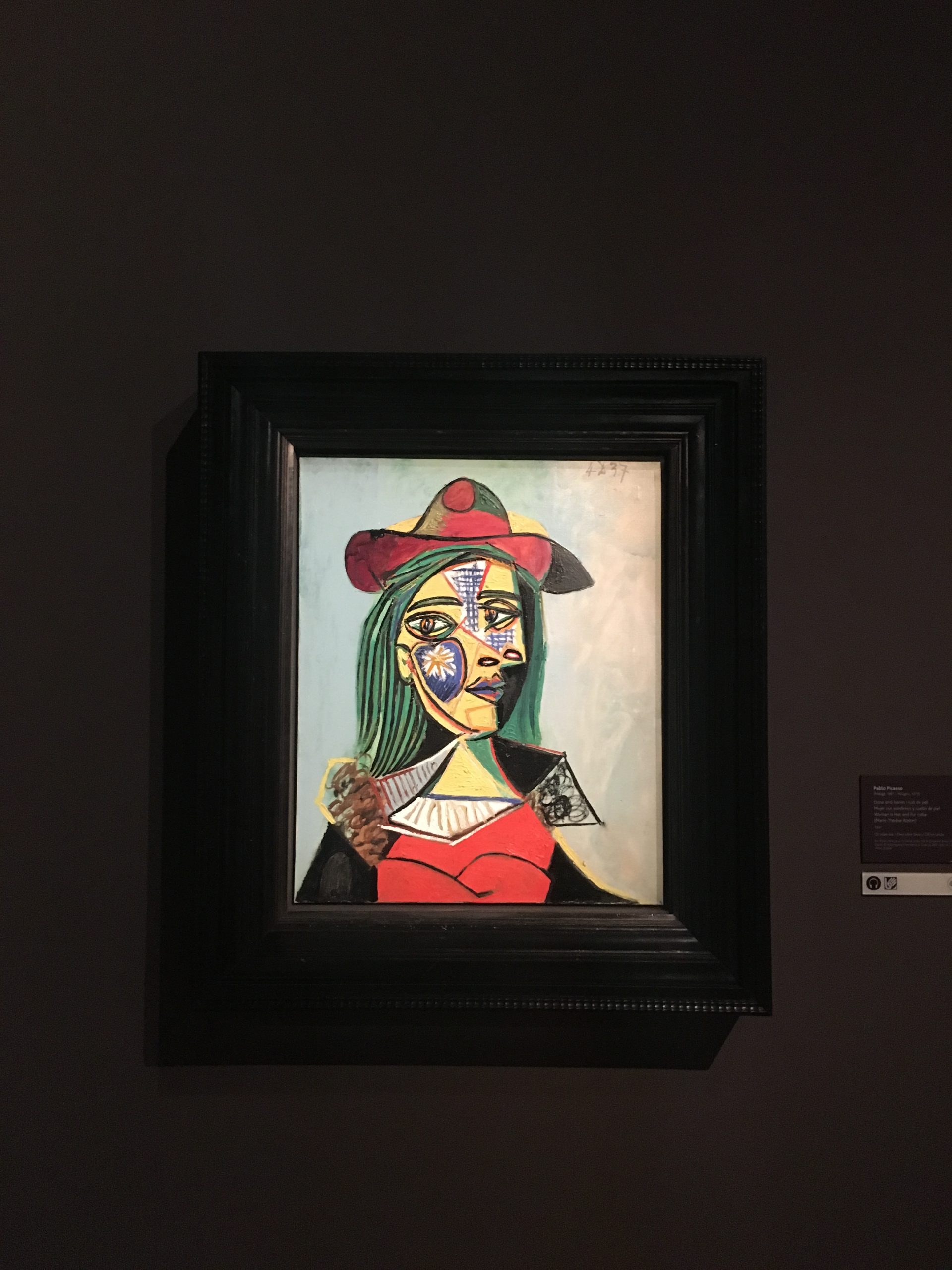


In front of the MNAC is another site built for the exposition called the Font màgica de Montjuïc (the “Magic Fountain”). Again, the fountain was built specifically for the exposition and has since become a tourist attraction and phenomenon. It’s a unique water and light feature and always draws a crowd. There’s just something magical about this fountain.


The Barcelona Pavilion
Twenty other European nations participated in the exposition, including Germany, Britain, Belgium, Denmark, France, Hungary, Italy, Norway, Romania and Switzerland. Most of these countries had their own pavilions, showcasing their achievements. As this was a temporary exposition, the pavilions were designed to be temporary as well. However, one such pavilion was so interesting that it was reconstructed after being torn down: the Pavelló Alemany (the “German Pavilion”). Designed by Ludwig Mies van der Rohe and Lilly Reiche, it is an incredibly important part of the history of modern architecture.
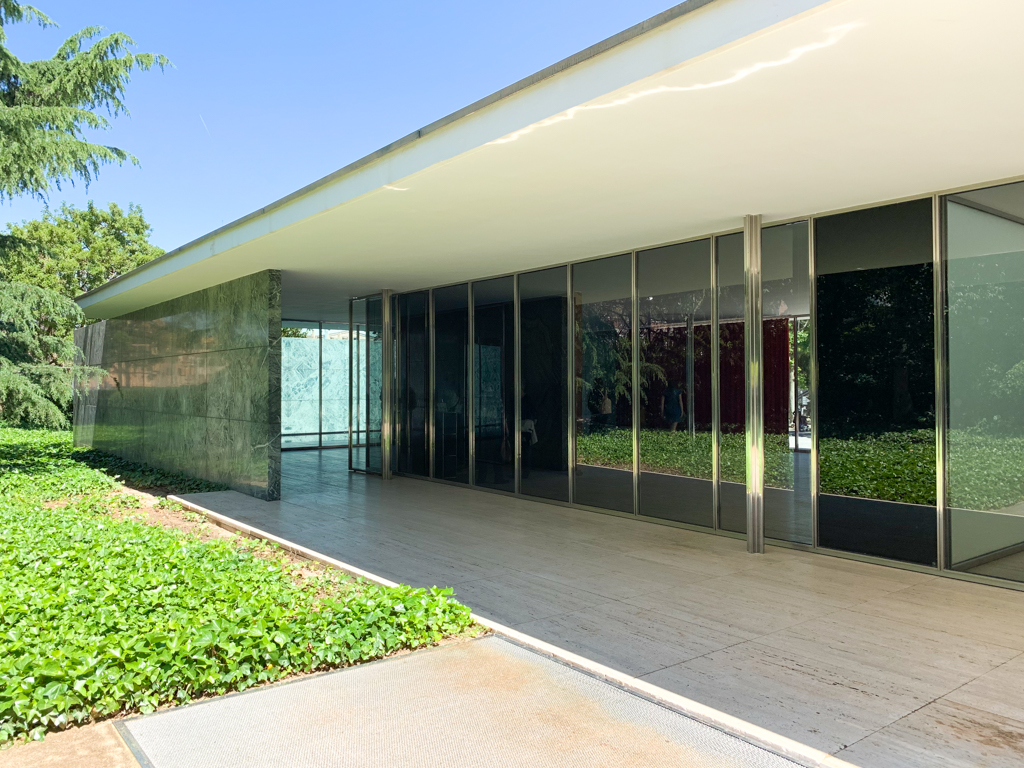

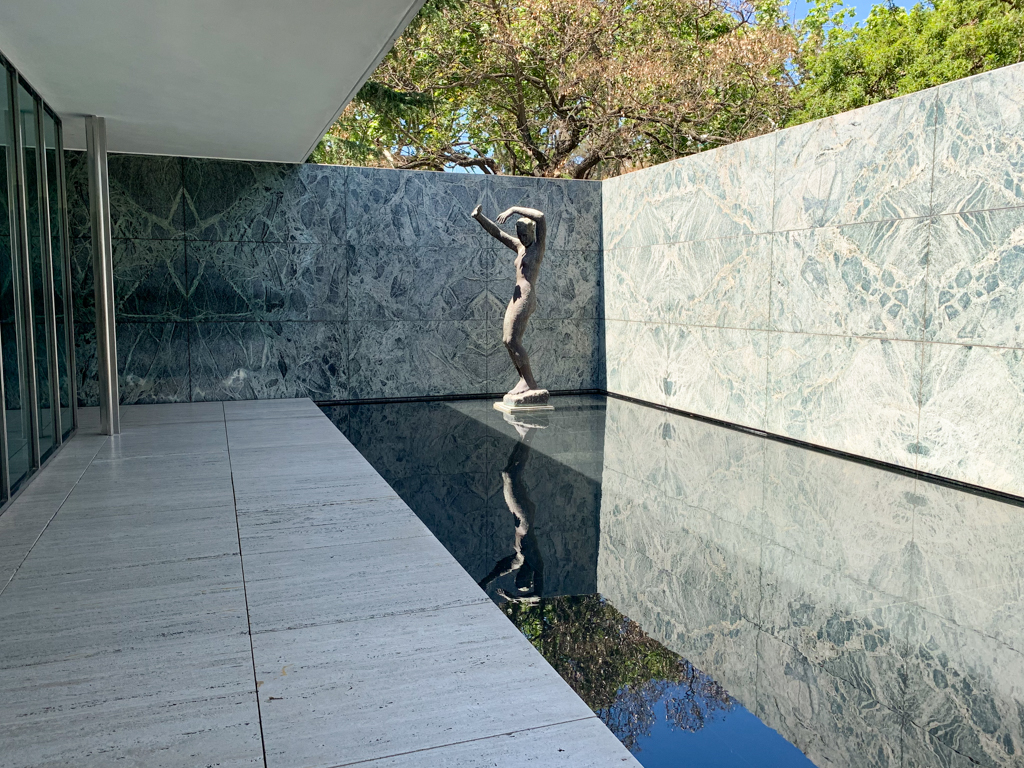
Olympic Games Venues
As I briefly mentioned in the intro, there was another event that led Barcelona to become the modern metropolis it is today: the 1992 Summer Olympic Games. The Games provided billions of dollars for infrastructure investments, which are considered to have improved the quality of life in the city, and its attraction for investment and tourism. Barcelona became one of the most visited cities in Europe after Paris, London, and Rome.
Montjuïc was selected as the site for several of the venues of the 1992 Summer Olympics, centred on the already existing Olympic stadium.
Called the Estadi Olímpic Lluís Companys, the Olympic stadium saw the opening and closing ceremonies and hosted the athletic events. Several other structures were built in preparation for the Olympics. These structures were within the Anella Olímpica (the “Olympic Ring”) and included several sporting venues: the Palau Sant Jordi indoor arena; the Institut Nacional d’Educació Física de Catalunya, an indoor venue used to host wrestling matches; the Piscines Bernat Picornell and the Piscina Municipal de Montjuïc, the venues for swimming and diving events respectively; and the telecommunications tower, designed by the architect Santiago Calatrava.
Joan Miró Foundation
Of course, beyond those two momentous events, Montjuïc has developed in between and beyond. A can’t-miss attraction is the Joan Miró Foundation. Joan Miró was a Catalan painter, sculptor and ceramist from Barcelona. His artistic style has been described as combining abstract art with Surrealist fantasy. His paintings are particularly recognisable due to his use of strong colours and simplified forms.
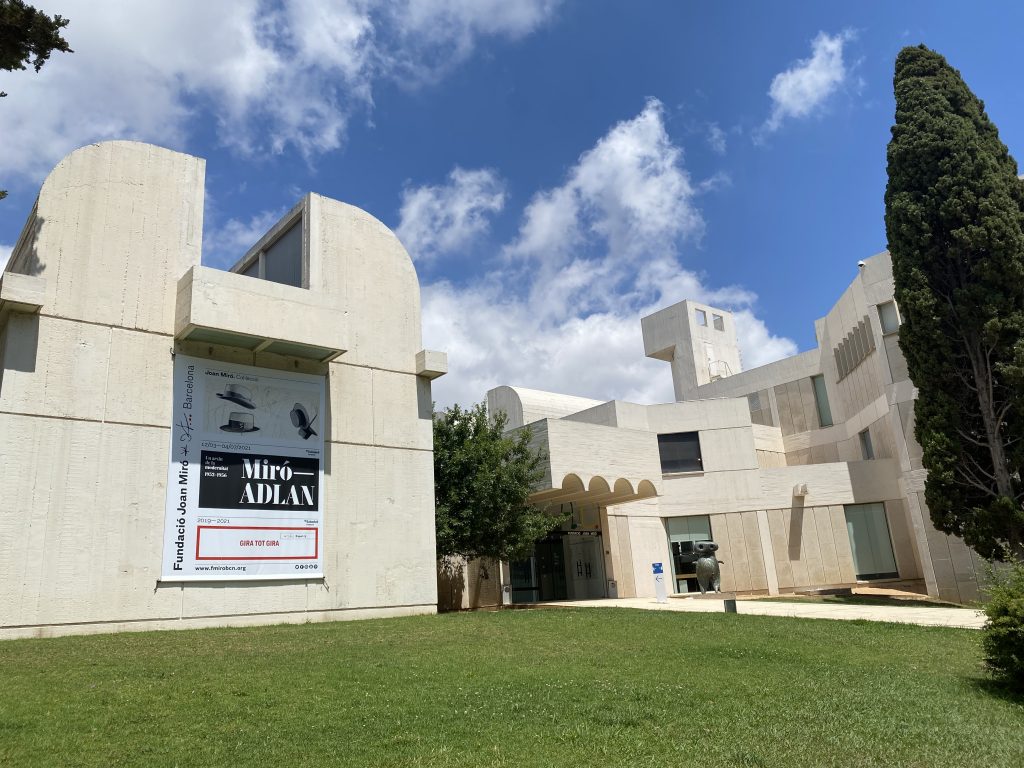
 The Foundation is an art museum honouring Joan Miró, which he himself actually envisioned before it opened on 10 June 1975. His idea was to create a space that would encourage particularly younger artists to experiment with contemporary art. This manifested itself in a space called, “Espai 13”. The museum is a lot bigger than just this space, and you can visit and admire several of Miró’s works.
The Foundation is an art museum honouring Joan Miró, which he himself actually envisioned before it opened on 10 June 1975. His idea was to create a space that would encourage particularly younger artists to experiment with contemporary art. This manifested itself in a space called, “Espai 13”. The museum is a lot bigger than just this space, and you can visit and admire several of Miró’s works.
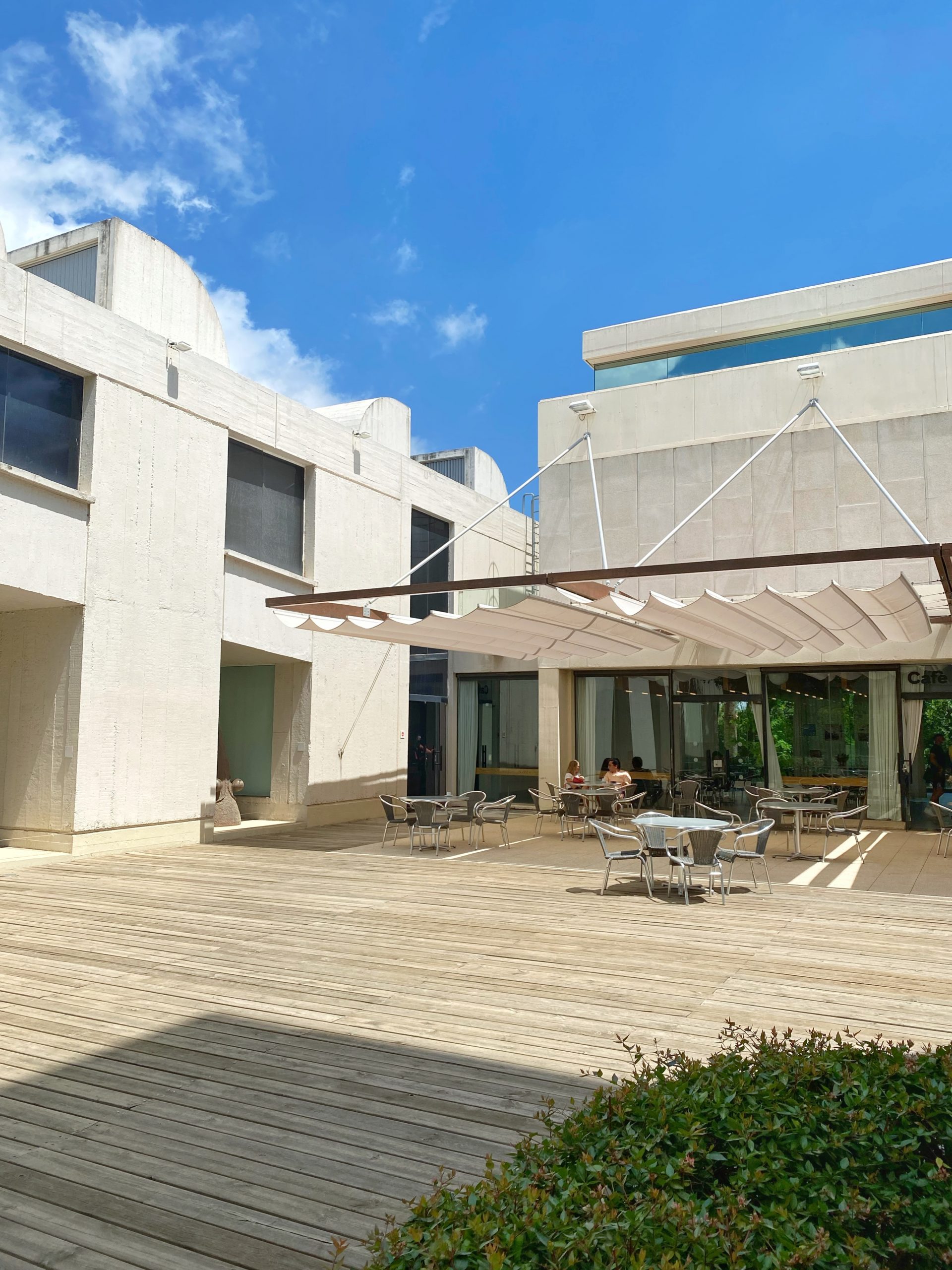
Botanical Garden of Barcelona
Montjuïc is also home to several beautiful parks and gardens, including the Jardí Botànic (Botanical Garden) of Barcelona. The garden contains and conserves Mediterranean plants from different parts of the world that have a climate similar to that of Barcelona. The garden is divided by countries and areas of the world: Australia, Chile, California, South Africa, the western Mediterranean area and the eastern Mediterranean area. There’s also a section dedicated to the Canary Islands.
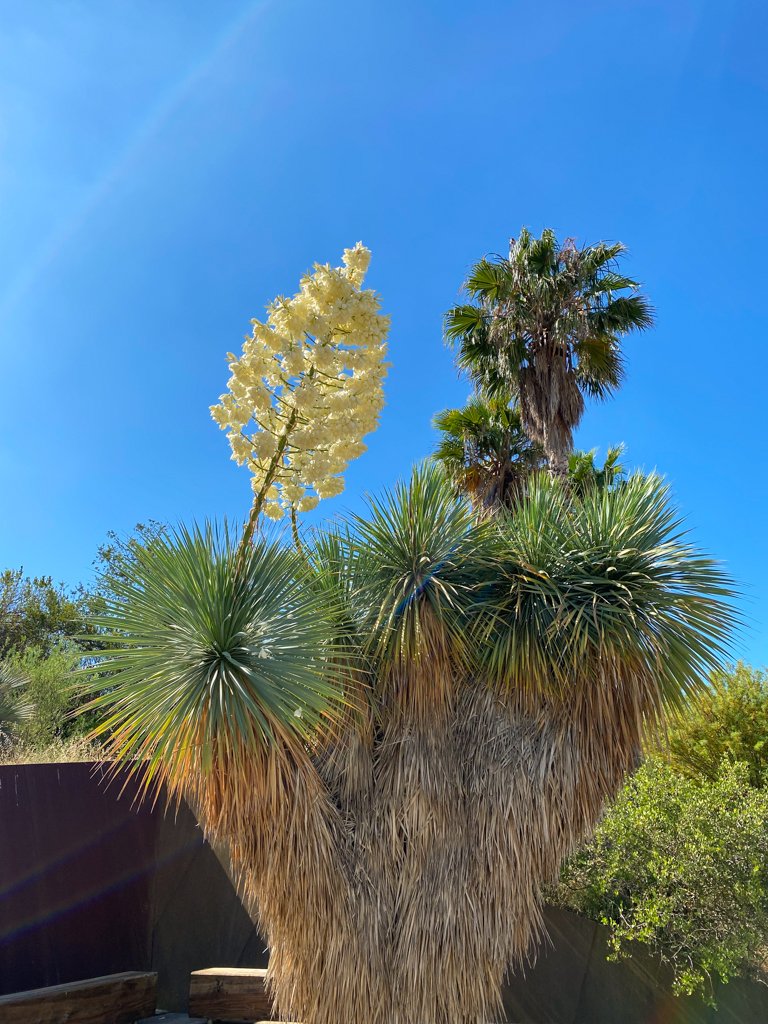


Mossen Costs i Llobera Gardens
My favourites gardens in Montjuïc are the Mossen Costs i Llobera Gardens, i.e. the cactus gardens. There are over 800 types of cacti throughout the gardens, making it seem like a world away from Barcelona as you step into a desert-like landscape. Barcelona, and even Catalunya, is not as hot as the actual almost desert areas of Southern Spain, so it’s a bit odd that so many cacti can grow here. However, it turns out that because of its location on the southern side of the Montjuïc mountain, the average temperature of the gardens is on average 2°C warmer than the rest of Barcelona. The gardens are literally a microclimate!

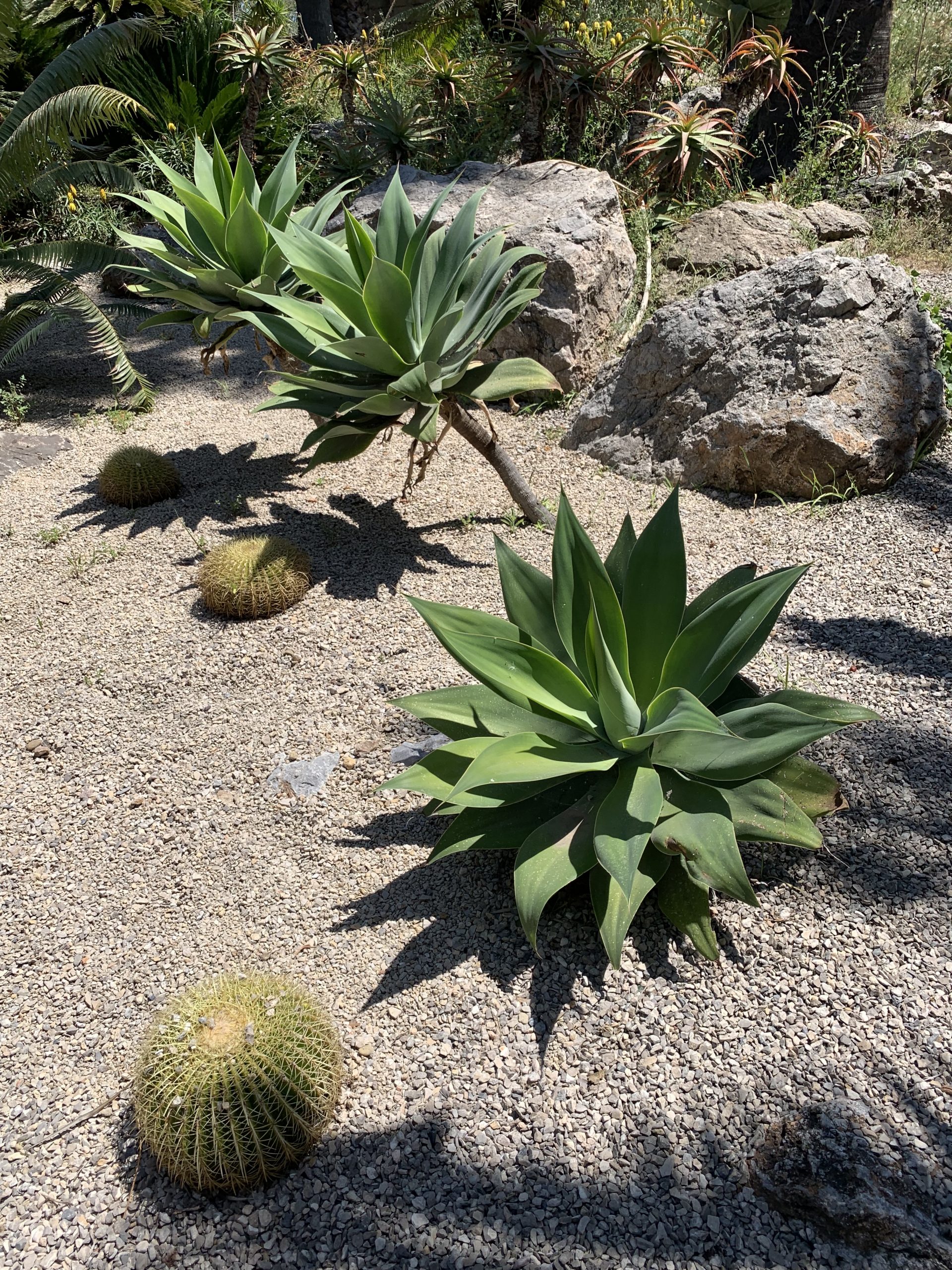

The gardens were created as a result of a collaboration between an architect named Joaquim Maria Casamor and a gardening school teacher and succulent plant expert named Joan Pañella. The gardens have an interesting name because they’re named after Miquel Costa i Llobera, a poet from Mallorca who mostly wrote in the Catalan language. Here’s an extract from one of his poems, “El pi de Formentor”.
My heart loves a tree! Older than the olive
More powerful than the oak, greener than the orange tree,
It keeps in its leaves spring eternally
And fights against the gusts that beat the coast,
And tire the trodden earth. Flowers of love do not peek between its leaves;
Its shadows do not go to the fountain to kiss;
But God anointed its sacred head with a scent
And as ground He gave it the rough mountains,
And as a fountain, the immense sea.
[…]
Onwards, be strong! Get through the mists
And lay roots in the heights, like the cliff-top tree.
You will see the sea of the ireful world fall at your feet,
And your gentle songs will carry on the wind
Like birds in a storm.
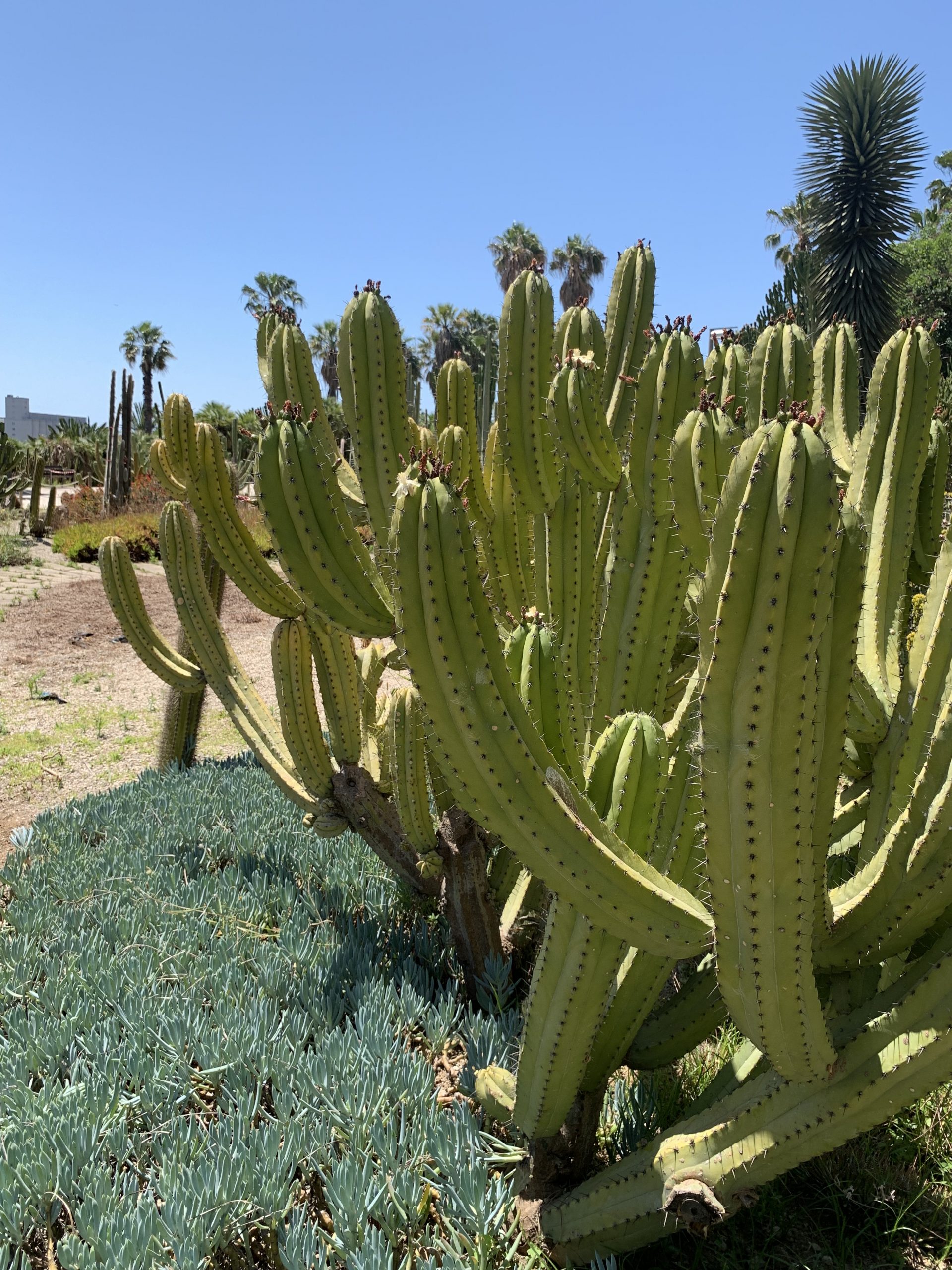

The gardens were officially opened in March 1970 but have gone through periods of recovery, remodelling and restoration. However, today, the gardens have been almost fully restored. I highly recommend visiting this wonderful less well-known area of discovery!
Other Gardens
There are so many other gardens to discover, and I’ve loved exploring each and every one of them.
Terraced along the hillside, the Jardins del Mirador de Alcalde are situated in a lovely spot allowing you to access a fantastic view of the city. There is also a lovely fountain with layered mini-waterfalls.

 The Mossèn Cinto Verdaguer Gardens gardens are so lovely and peaceful. The best feature is the water lily ponds. I had never seen so many water lilies in one place and it’s remarkably special to see and experience.
The Mossèn Cinto Verdaguer Gardens gardens are so lovely and peaceful. The best feature is the water lily ponds. I had never seen so many water lilies in one place and it’s remarkably special to see and experience.

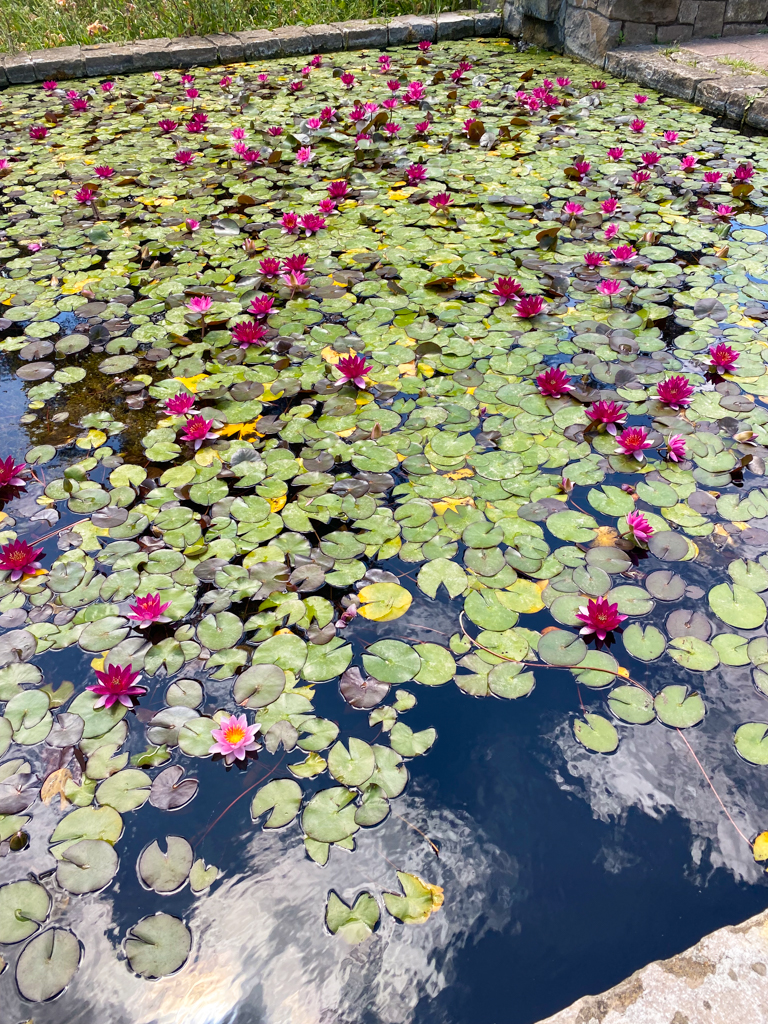

The Jardines de Laribal are situated lower down the mountain and have a sort of Southern Spain/Alhambra feel to them. The gardens are much lusher and the plants have taken over many of the structures. These gardens are most known for the Font del Gat (the Fountain of the Cat) which was built in 1918 by Joan Antoni Homs. The fountain was featured in the popular song “La Marieta de l’ull viu” by Joan Amich and is a sort of cultural icon. See if you can spot the cat’s face!
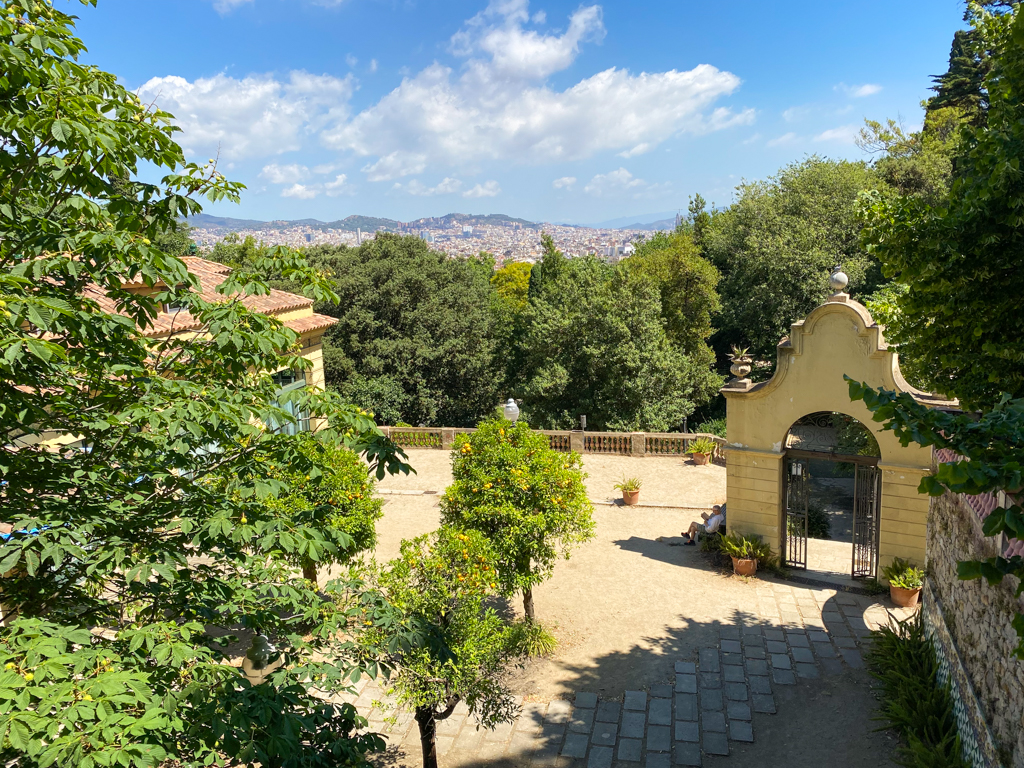

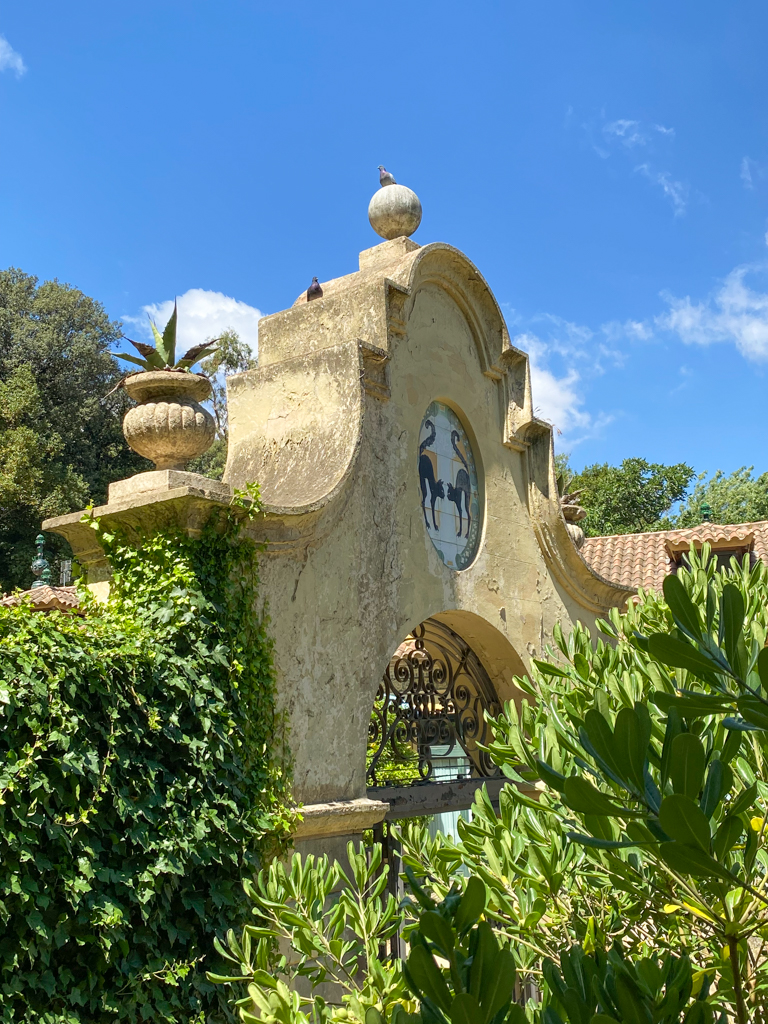
There are of course plenty of other gardens to explore too, like the Greek Theatre Gardens, Jardín Botánico Histórico and Joan Maragall Gardens. These gardens are only open on the weekends, so keep that in mind if you’d like to visit.
Visiting
Montjuic is serviced by one form of public transportation: the cable car! I’ve never been up on it myself because I haven’t been lucky enough to get a beautiful, clear day while in Montjuïc, but good weather is key!
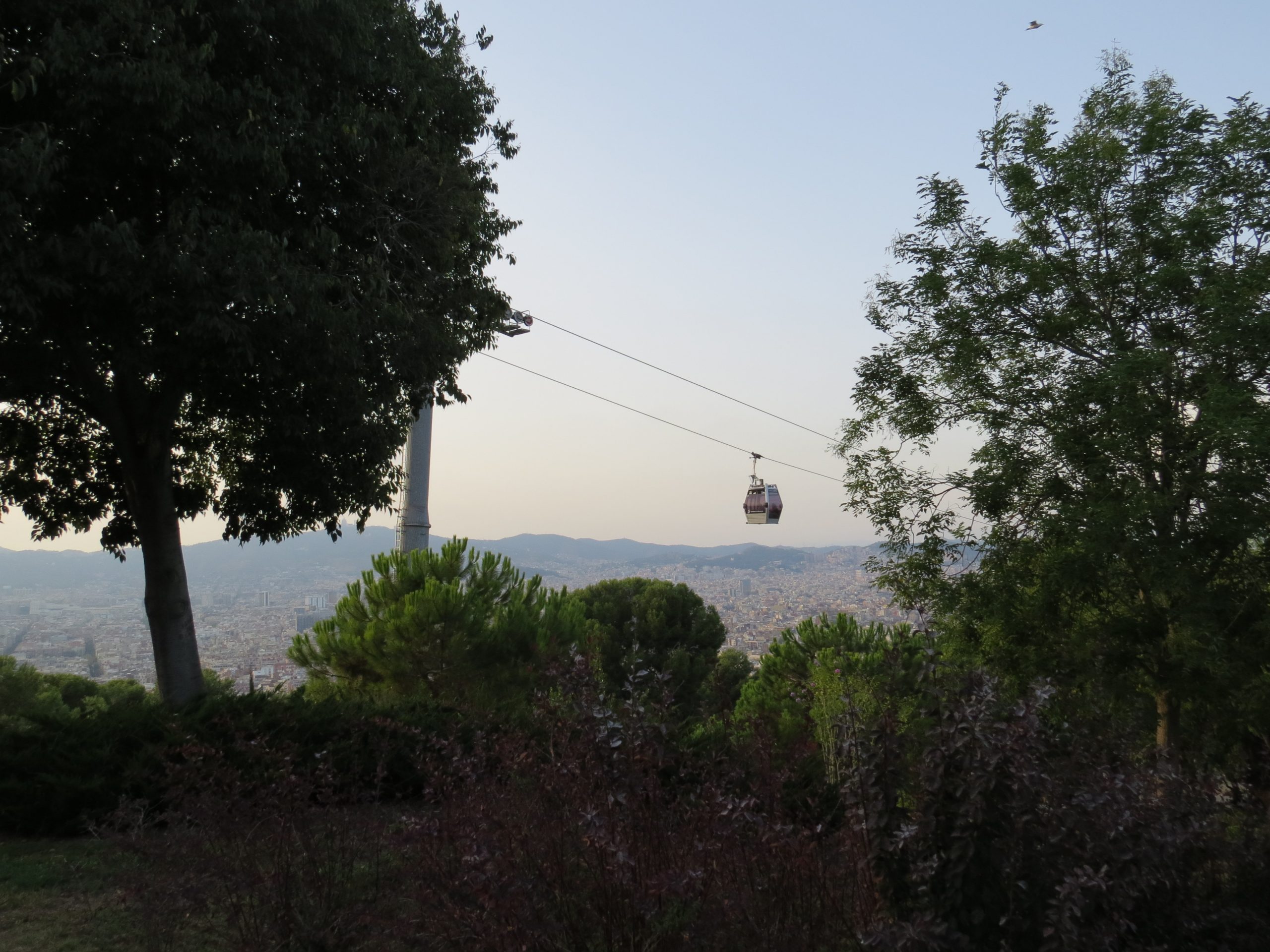 As you can see, there is so much to discover on Montjuïc. It’s easy to just hit the well-known highlights, like the MNAC or the Castle, but there’s so much more to see and enjoy. Once you’re done exploring the mountain, you can head down by foot or cable car to another neighbourhood, like Poble-Sec or Barceloneta, for dinner. It certainly makes for a wonderful day.
As you can see, there is so much to discover on Montjuïc. It’s easy to just hit the well-known highlights, like the MNAC or the Castle, but there’s so much more to see and enjoy. Once you’re done exploring the mountain, you can head down by foot or cable car to another neighbourhood, like Poble-Sec or Barceloneta, for dinner. It certainly makes for a wonderful day.
Montjuïc is a wonderful place to explore – which parts are you most looking forward to visiting?


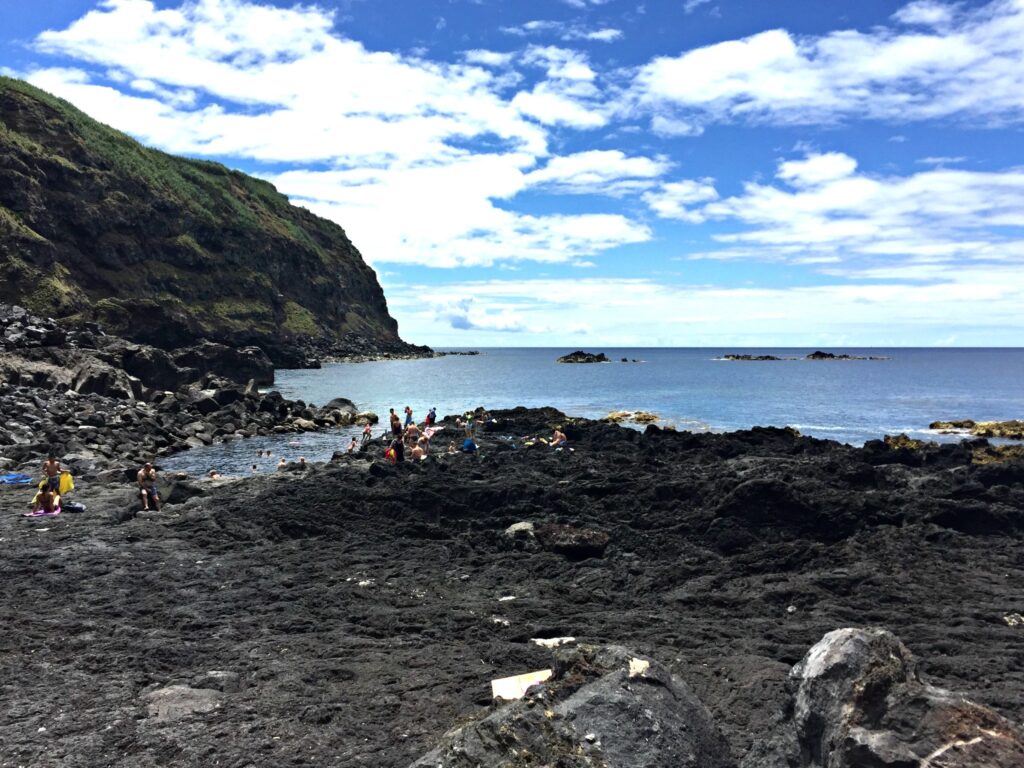

2 Comments
This was a really helpful guide to our recent trip to Barcelona. L’Antic Forn was nice, but calcot season hasn’t started!
Ah no, it is indeed a little early! Calçot season starts around December and lasts until April. Hopefully one day you can come back to try them! I’m glad this guide was helpful.
Jamie